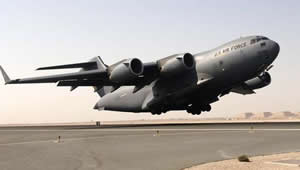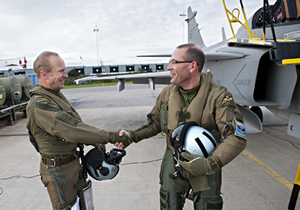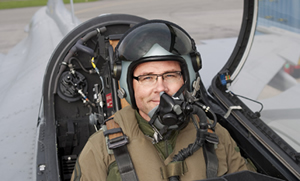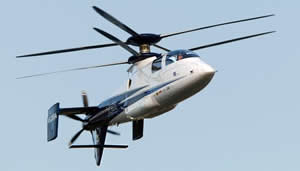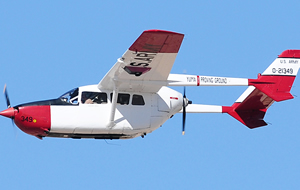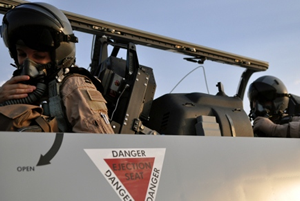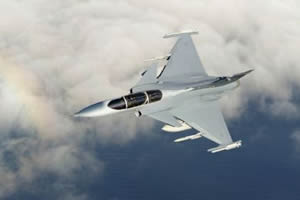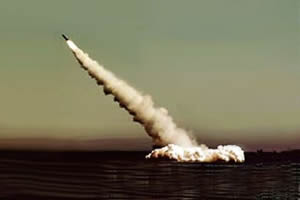-
Posts
6,754 -
Joined
-
Last visited
-
Days Won
38
Content Type
Profiles
Forums
Gallery
Downloads
Store
Everything posted by Erik
-
These are never good issues to have to resolve and I have been trying to work with you regarding this, as you know. File transfers and connectivity in general are bilateral. Specifically not only do we have to maintain a connection with your machine but your machine has to maintain a connection to us. If either side of the communication fails then they both fail. Consider it much like a phone call. If one person hangs up the phone on their end the conversation is over. The same applies to connectivity and file transfers. Since you were able to download from the site at a remote location it would suggest to me that the issue we are looking for is at home. Have you contacted your ISP to have them look at your connectivity? Some questions to ask them are. Is my cable modem reporting any errors or resets? Is my signal to noise ratio within acceptable range? Is my packet loss within acceptable range? This may require a technician to come out and diagnose the problem but this is the most common cause of problems. Please note that I'm not trying to step aside and say that our connectivity is perfect, although I'm confident it is well above normal, but when we have problems they are experienced by everyone or a group of people (example: all on the same ISP) not just one computer or connection. Please keep me advised and let me know if I can help in any way. Erik I see the error is happening in Internet Explorer, is it happening on other browsers? I will see what I can do to fix this. Thank you for the report. Erik
-
What browser do you use? What version of Java is installed on your machine? I would try the following without knowing the above. Clear your browser cache so that all pages being requested from CA are new and not cached. Update your version of Java if you're running an old version the java scripts like the menu drop down function may not depricate to older versions causing this problem. Let me know. Erik
-
Telegraphindia -- SUJAN DUTTA New Delhi, Oct. 20: New Delhi has decided to play hardball on military pacts with the Pentagon after expectations were raised that the pending agreements may be signed during the visit of Barack Obama in about two weeks from now. “We are in consultation with the armed forces about the benefits and utility of these (agreements),” defence secretary Pradip Kumar said here, in a rare public admission of the military’s discomfort over US proposals to sign a Logistics Supply Agreement (LSA) and a Communications Interoperability and Security Memorandum of Agreement (CISMOA). The discordant note was struck after reports that the US was lining up a $2-billion security aid package for Pakistan. Last month, during his visit to Washington, the defence minister had raised the issue with US secretary of defence Robert Gates. A.K. Antony also emphasised that India suspected Pakistan was using US military aid to reinforce its conventional war-fighting capabilities against India. The LSA will allow US warships, military aircraft and personnel to access Indian military bases for refuelling, rest and recuperation, and turnover on a reciprocal basis. It would allow the US to replenish its military platforms on a barter basis, meaning that the US would allow similar access and facilities to the Indian armed forces. The CISMOA is designed to ensure that equipment transferred to the Indian armed forces are encrypted, secure and compatible with US military systems. A highly placed defence source said a view that had emerged from the armed forces during consultations was that signing such agreements would “bind” India to US military equipment. The Pentagon argues that the signing of the agreements would facilitate the transfer of high-tech platforms and keep India-US military relations robust. The statement today — that the armed forces were being consulted to verify if the pacts would be beneficial — is a step back from the position that India was studying the agreements. Draft agreements have been pending with the cabinet committee on security (CCS) for three years now after they were vetted by the armed forces headquarters. Negotiations over such agreements can be protracted. It took three years for Washington and New Delhi to agree to a standard text on the End User Verification Agreement (EUVA) — through which the Pentagon judges if a military system is being used by a buyer for the purpose for which it was meant — that was signed last year. The expectations on clinching the agreements rose because of the high-profile visit by Obama. It is exceptional for a US President to visit India within the first two years of his first term in office — that demonstrates the priority the White House gives to India. Prime Minister Manmohan Singh was also the first state guest of the Obama administration last year. The US was also expecting the agreements to be signed along with announcements of two major arms deals. The Indian Air Force has decided to buy 10 C-17 Globemaster-III heavy airlifters in a deal that could be worth $4.4 billion. A second deal — for up to 300 M-777 ultra light howitzers – under the Pentagon’s direct Foreign Military Sales programme is in the works but an announcement is unlikely because the Indian army has not yet finished evaluating the guns. The guns are for deployment in high-altitude border positions on the Chinese frontier. The Indian Air Force that had earlier contracted the C-130J Hercules from the US is getting the medium-lift aircraft minus some of the equipment that the Pentagon says could have been made available if the agreements were signed. But topping the US’ priority in all these deals is the mega-competition to sell 126 (possibly 200) medium, multi-role combat aircraft that could cost as much as $12 billion. Two US-origin aircraft, Boeing’s F/A-18 Super Hornet and Lockheed Martin’s F-16 Super Viper (Fighting Falcon) are in the running. The US has got a boost after a technical committee determined the GE-414 engine as the best option for India’s indigenous Tejas light combat aircraft programme. The GE-414 also powers the Super Hornet, as it does the Swedish-origin Gripen NG. (The other aircraft in the competition are the MiG 35 of Russia, Dassault’s Rafale of France and a European consortium’s Eurofighter Typhoon). Each of the countries is leveraging their diplomatic muscle to win the contract. Since the civilian nuclear agreement, Washington believes its claim is the strongest. Air Chief Marshal Pradeep Vasant Naik had said the air force had submitted its technical evaluation report and a selection was likely by 2010. The report is now with the government that will make a choice not only on financial but also on diplomatic and political considerations. Telegraph India
-
Håkan Buskhe has only been CEO of Saab for one and a half months but he has already travelled the globe marketing Gripen to several countries. Yesterday, Mr Buskhe got his first flight in the Gripen fighter, taking-off from the Saab airfield in Linköping, Sweden. Image: Ola Rignell, head of Saab Flight Test, congratulates Saab's new CEO Håkan Buskhe (right) after his first flight in Gripen. Photo: Per Kustvik SAAB -- October 2010 The flight, in a Gripen D (39827) lasted for 1 hour and 8 minutes, with Ola Rignell, head of Saab Flight Test in the front seat. That included two sorties with a hot refuelling in between. “I’m living my childhood dream right now, and the flight in Gripen was just the icing on the cake. I´ve been briefed by the engineers that design the aircraft, visited the different stages of production and talked to some of the fantastic people that build the aircraft and now I’ve spent time at our Flight Test department. And remember, Gripen is just one of our world leading products.” Håkan Buskhe had the opportunity to pilot the aircraft himself. He was also fortunate to meet up with one of the brand new Gripen aircraft produced for the Royal Thai Air Force and took part in formation flying. “What I remember most is when we were flying 60 feet above the Baltic Sea and then suddenly afterburner on and we were climbing straight up to 30 000 feet. Like a rocket.” Back on ground again Håkan Buskhe was congratulated by the first Gripen pilot, Stig Holmström, and presented with his own personal desk top model of Gripen D. “I don’t believe that I’m a pilot just because I have flown Gripen once, but it is amazing how easy it is to understand the system. Especially with a good instructor like Ola. I knew Gripen was an amazing aircraft, and now I understand why.” Håkan Buskhe has previously flown the Saab 105 jet trainer. Image: Saab's new CEO, Håkan Buskhe in Gripen. Photo: Per Kustvik SAAB
-
PalmBeachPost -- By Stacey Singer Sikorsky had picture perfect weather to show off the world's fastest helicopter Wednesday morning, and X2 test pilot Kevin Brendenbeck didn't waste the opportunity."Are you ready to get spanked?" he asked the Bell 407 pilot about to race him over the swampy tarmac off Beeline Highway. It was a first glimpse of the X2 for media and for many of the subcontractors whose components helped make the aircraft; an adrenaline-fueled day designed to amp up excitement for a project Sikorsky has spent over five years and untold millions developing, all on spec. Sikorsky is betting that the military and the civil aviation markets will welcome a high-tech aircraft able to combine the maneuverability of a chopper with the elegant speed of a jet. And so Sikorsky CEO Jeffrey Pino announced Wednesday that after 18 test flights, it was ready to incorporate its X2 demonstrator technology into a new light tactical military aircraft prototype dubbed the Sikorsky S-97, aka the Raider. "We are absolutely committed to doing this," Pino said during a media briefing after the race. Sikorsky engineers said the Raider is actually needed by the U.S. Army right now, and in a big way. The mountainous terrain of Afghanistan isn't just inhospitable to Jeeps. High altitudes and thin air make about 53 percent of the country out of reach of helicopters. But not the X2-based Raider, Pino said. Because the helicopter is powered by both its twin rotors and its pusher propeller, it has enough force to fly at 10,000 feet, enabling it to cover nearly all of the Afghani terrain, Sikorsky said. The X2 demonstrator has been in development at Sikorsky's West Palm Beach test facility off Beeline Highway since July 2009. In a test flight last month, the X-2 hit 250 knots, or 287 miles per hour, unofficially beating the world helicopter speed record, nearly twice the speed of conventional helicopters, like the Bell 407 it was racing on Wednesday morning. It's possible because of computerized vibration-controlling systems and a fly-by-wire digital pilot that simplifies a pilot's tasks, not to mention light but strong composite materials that make its pusher propellar and counter-spinning twin rotors. In its flight test, the X2 moved with the agility of a dragonfly on jet fuel. Even with a long head start, Bell pilot Bill Fell played tortoise to Sikorsky's X2 caffeinated hare. It wasn't a fair contest. Going full out, the Bell hit a leisurely 140 knots, about 161 miles per hour. The X-2? At about half-power, sounding like a cross between an angry bee and a freight train, it easily hit 210 knots, or 241 miles per hour, just 7 knots behind the all-time speed record for a helicopter. For the pocket-protector set -- the mechanical engineers and test pilots gathered for the show, it was a gleeful day. "If you follow the aviation industry, it doesn't get any more exciting than today," said Chris Van Buiten, director of Sikorsky Innovations, the skunkworks that developed the aircraft. "The performance is even better than we thought." Palm Beach Post
-

downloads freeze with subscription
Erik replied to luckyluca's topic in Site Support / Bug Reports / Suggestions
My best guess is that a router was having a problem and it's since been fixed. If you look at our connection and consider the distance the fact that we originate, carry, and destinate on just 2 carriers is pretty great. Virgin can't be too bad given that. I've seen carriers who bucket buy bandwidth and will dump connections four times to another carrier before hitting a centralized hub. It's one reason I was really happy with our DC when they decided to carry on nLayer. Our connectivity has performed very well for us and I can't say enough good things about nLayer for the way they route in and out of our DC. Glad all is resolved, thank you for updating me. Erik -

downloads freeze with subscription
Erik replied to luckyluca's topic in Site Support / Bug Reports / Suggestions
Those numbers aren't bad considering you're jumping the pond. My return routing looks like this: 1 . (216.104.36.209) 1.413 ms 1.829 ms 2.066 ms 2 dr6506a.ord02.singlehop.net (65.60.6.65) 1.313 ms 1.297 ms 1.299 ms 3 xe-3-0-2-1101.ar1.ord1.us.nlayer.net (69.31.111.93) 1.502 ms 1.493 ms 1.480 ms 4 ae1-30g.cr1.ord1.us.nlayer.net (69.31.111.133) 1.207 ms 25.428 ms 25.424 ms 5 xe-3-0-0.cr2.iad1.us.nlayer.net (69.22.142.26) 18.156 ms xe-4-2-0.cr1.ewr1.us.nlayer.net (69.22.142.42) 19.640 ms xe-3-0-0.cr2.iad1.us.nlayer.net (69.22.142.26) 18.138 ms 6 eqix-ix-1.ntli.net (206.223.115.174) 113.808 ms ae2-50g.cr1.nyc2.us.nlayer.net (69.31.95.174) 20.141 ms eqix-ix-1.ntli.net (206.223.115.174) 113.128 ms 7 popl-bb-1b-as0-0.network.virginmedia.net (62.253.184.5) 114.086 ms 113.325 ms 114.062 ms 8 popl-bb-1b-ae5-0.network.virginmedia.net (213.105.159.5) 170.019 ms 170.000 ms 169.977 ms 9 popl-bb-1b-as0-0.network.virginmedia.net (62.253.184.5) 115.741 ms hari-core-1b-pc200.network.virginmedia.net (195.182.178.170) 116.225 ms 117.455 ms 10 hari-core-1a-v11.network.virginmedia.net (62.30.144.38) 116.691 ms 116.923 ms 119.129 ms 11 hari-core-1b-pc200.network.virginmedia.net (195.182.178.170) 121.379 ms camd-geam-1a-tenge71.network.virginmedia.net (62.30.250.34) 116.402 ms 114.404 ms 12 camd-cmts-13-ge130.network.virginmedia.net (81.97.255.2) 116.912 ms 117.823 ms 117.793 ms 13 * * * 14 * * * 15 * * * As you can see the return inbound to your machine reaches what looks like your ISP's headend just fine. The machine at your step 2 and my step 13 is not responding to inbound ICMP traffic which is pretty normal for security reasons. The only thing I can suggest that might help diagnose the problem is to disconnect from your home network and go straight to your modem then check downloading again. This will just take your router at home out of the equation. If your router and modem are one and the same try resetting it. Past that the only other thing I can suggest is try a different machine and check your firewall settings. Let me know how or if I can help further. Erik -
Congratulations Soulfreak! If you want to give your subscription to someone you can. Because you're a modder you won't be able to use a subscription on your account. Let me know. Erik
-

downloads freeze with subscription
Erik replied to luckyluca's topic in Site Support / Bug Reports / Suggestions
Hi - I checked the files you mentioned and they are fine. Subscriptions don't change the actual download process. Once you're at the point where the file transfer has initiated it's a matter of connectivity between the server and your local machine. Since you mentioned that you're getting some of the file then you are getting past the point the subscription could be an issue. Can you run a tracert and ping to our domain and post the results? From a command prompt type the following: tracert combatace.com + [Enter] ping combatace.com -n 30 + [Enter] I suspect that your connection is dropping or something on your local end is shutting down the open file request like security software. Let me know. Erik -
CombatACE Facebook Contest Winner Week 4 - Carlo Vecchi The Randomizer selected #10 this week and on our Facebook list that is Carlo Vecchi. Congratulations! Week 1 - Ivan Adamek Week 2 - Shaun Griffies Week 3 - Matthew Mckee Carlo post on our Facebook page what your CA username is, then send us a PM here so we know you posted. Once we have that information we'll get your free download subscription added to your account. See you again next week for our latest winner. If you haven't added us to your Facebook likes we can't draw your name.
-
The Australian -- By Cameron Stewart The air force is about to reverse a decade of decline with a string of new aircraft. The balance of power in Asia is changing faster than the new Gillard government would like. China is flexing its muscles, making its near neighbours nervous with its ambitious naval expansion. The US has taken note and is quietly shoring up its alliances in the region, reassuring all that it will remain the pre-eminent power in the Pacific. These big-picture trends are causing debate, but in Australia there is a more subtle military shift under way that will also help redefine the balance of power in our immediate region for years to come. The Royal Australian Air Force is about to reverse a decade of decline in its strength relative to other regional air forces. Within two months, the second batch of Super Hornets will arrive from the Boeing plant in St Louis, creating the first operational squadron of the RAAF's new jet fighter. At the end of this year, these initial 12 Super Hornets -- the first of 24 -- will take over from the grand old dame of warplanes, the F-111 strike bombers. The mothballing of the F-111 and the arrival of the Super Hornets, along with the new Wedgetail airborne early warning and control aircraft and new air-to-air refuellers, marks a long-awaited turnaround in Australia's air power capabilities. "In terms of hardware, the air force has begun a period of transition in which most of its front-line fleet will be replaced by 2020 or shortly thereafter," says Andrew Davies of the Australian Strategic Policy Institute. "The delivery of Wedgetail and the Super Hornet represents the arrest of a slow decline in the RAAF's long-held regional qualitative lead in air combat capability." Chief of Air Force Mark Binskin admits this is a pivotal moment in the history of the RAAF. "It's one of those generational changes," the air marshal tells Inquirer. "The F-111 has been around for a long time and is seen as the strategic strike weapon for Australia so I think there is a lot of emotion and it will be quite a time in December when the last F-111 flies . . . but it is time for a change. "The Super Hornets coming in and the [advance capabilities] it will bring in combination with the upgraded [classic F/A 18] Hornets really does reset the relative combat power that we have." While other countries in the region have been investing in advanced fighter jets such as Russian Sukhoi fighters, US F-15s and F-16s, Australia's fighter stocks have been in relative decline during the past decade. Until recently, the RAAF's 70 F/A-18s have struggled to reach full operating capacity because of the need for progressive upgrades to keep them flying until their planned retirement date in 2018. The 15-strong F-111 fleet has been largely ceremonial for the past decade; modern air defences have made it too risky to send the much loved "Pig" into a hot war without heavy aerial support. With their long range and their ability to fly low and blindingly fast, the F-111s were the pre-eminent strike bomber of their era, reaching their target before defence radars could spot them. But since the 1980s the development of new radars, such as the F/A-18's pulse-Doppler APG-65 radar, made the F-111 vulnerable because they could pick out fast-moving, low-flying targets. "More and more air forces were re-equipping with modern Western and Russian fighters and ground-based air defence systems built around such radars," defence expert Gregor Ferguson says. "Suddenly the F-111 wasn't invincible any more. There was nothing it could do that can't be done now by a different combination of aircraft and weapons which can also fill other roles and deliver wider operational benefits." While the F-111 will be a sentimental loss, the arrival of the Super Hornet represents a sharp lift in actual combat capability. Used by the US Navy, they are the first new RAAF front-line fighters since 1985. A recent ASPI report on RAAF capability states: "Compared to the classic Hornets, they carry more powerful radar, electronic warfare and networking capabilities and can carry greater weapons load over a longer range. They also have a degree of low observability built in. The Super Hornets will give RAAF a capability on par with the US Navy." Davies says the combination of the Super Hornets and the standard F/A-18s should ensure that Australia retains a capability edge in air power in the region ahead of the arrival of the F-35. "The number and capability of Australia's air combat aircraft will overmatch the piecemeal and less well supported fleets of nearby nations [except Singapore]. As well, in any defence of Australia scenario, the RAAF should be able to establish local air superiority and conduct sea denial operations even against a major power." Davies tells Inquirer: "What we will get with the Super Hornet is the ability to hit targets [that] have modern air defence systems. "What we lose is a bit of range. We have to work harder to get a range anything like the F-111." Twelve of the 24 Super Hornets will be configured so they can be potentially transformed into a specialised electronic warfare version of the Super Hornet known as the Growler. "This is a dedicated electronic warfare aircraft and that is a significant capability that we have never had before," says Davies. Because Super Hornets are already in use in the US Navy, they will arrive in Australia almost ready to fly. Late last month, five Super Hornets and about 100 aircrew and maintenance personnel from No 1 Squadron at RAAF Amberley, Queensland, began the first live weapons trial in Australia, testing air-to-ground weapons firing at Woomera in the South Australian desert. There are 11 Super Hornets in Australia and a new group of three planes is set to arrive in November. All 24 aircraft are expected here by the end of next year. Their arrival coincides with the planned arrival by early next year of all six Wedgetail AWACs. The Wedgetails are four years late and the program has been deeply troubled by technical hitches and cost overruns. But when introduced into service next year the planes -- in theory -- should be able to scan the airspace above Australia's maritime approaches to detect an air or sea attack and direct planes and ships to defeat that threat. "From a cruising altitude of 30,000 feet, the MESA radar mounted on the upper fuselage of the Wedgetail aircraft is designed to detect targets more than 400km away in all directions [including] hard-to-see targets such as cruise missiles," Ferguson says. The Super Hornets are a bridging fighter to fill the gap between the retirement of the F-111s and the arrival from 2014 of the new F-35 Joint Strike Fighters. Former defence minister Brendan Nelson was widely criticised in 2007 when he announced the $6 billion Super Hornet purchase, but setbacks and delays in the F-35 project have justified the decision in hindsight. Australia plans to buy 100 F-35s but the project has been bedevilled by technical problems, cost blowouts and schedule slippages. Its original delivery date to Australia of 2012 has blown out and the first squadron of F-35s is not expected to become operational until 2018. Despite this, the Australian government has never wavered from its commitment to the new warplane and still argues that it is the best and most cost-effective solution for the RAAF's future front-line fleet. The troubled project also received a rare bit of good news recently. Its flight testing program, which has been well behind schedule, has gained some momentum and the full-year goal of 394 flights is likely to be met. The Australian
-
Yuma Sun -- By James Gilbert -- October 12, 2010 YUMA PROVING GROUND — Employees working at various test sites throughout Yuma Proving Ground will no longer hear the familiar sounds of either of the two O-2 Skymaster the installation has soaring high overhead. Originally built in 1967, the legendary plane forged a reputation as a hardy and dependable aircraft for forward observation missions during the Vietnam War. Although the model is now more than 40 years old, they are the only two of this model in the military inventory that still carry out active-duty missions, used at YPG to support test mission. As of Oct. 1, however, YPG's two Skymasters, the last two in the Department of Defense's inventory, were officially retired and bound for museums. “They are getting old and difficult to maintain,” said civilian pilot Ralph Arnold, who has flown the planes the past six years. “It is sad. We probably just don't use them enough anymore to justify having them anymore.” The plane, with Lt. Col. Steve Milton, commander of the Yuma Test Center, onboard, took to the skies above YPG for the last time Tuesday morning. Milton said it was unfortunate that his first-ever flight in the plane also happened to be its last. “I'm glad to have the opportunity,” Milton said of his flight moments before taking off. “It's taking a seat in history.” Milton said from a historical perspective, it is amazing to think about all the different types of missions the iconic planes have flown on over the years, where they have been and how many different branches of the military have owned them. About 510 of the O-2 aircraft were built between 1967 and 1970. The aircraft is unique in its design in a couple of ways. First, its propellers counter-rotate, balancing out the effects of the torque and the p-factor, or aerodynamics. It's “high-wing” design also proved useful for a clear observation of what was below and behind the aircraft. The second feature of this aircraft that makes it stand out is the placement of its two engines. Instead of on its wings, its engines are mounted in the nose and rear of its pod-style fuselage, which creates a “push-pull” effect. During the Vietnam War, the aircraft was used as a forward spotter to observe where the artillery was hitting the ground and then call in the ground support jets to complete the missions. It had fixed hard points to deliver rockets, flares and other ordnance for self-defense and to designated targets for air strikes. Arnold said both of the 0-2 Skymasters at YPG have 10,000 hours of flight time, which he estimates is equivalent to flying about 1.5 million air miles. “It is a fun plane to fly,” Arnold said. “It also sounds really cool going down the runway.” YPG got the planes from Arizona's Fort Huachuca in 1998 when the program in which they were flown was closed. Arnold said Huachuca was going to dispose of them, but YPG said they could use the planes. Prior to going to Fort Huachuca, the planes were owned by the U.S. Navy, which got them from the Air National Guard, where they wound up following the war. Arnold said one of the planes will remain at YPG as an exhibit for the installation's Heritage Center museum. The other plane has been offered to the Air Force's museum at Wright-Patterson Air Force Base in Ohio. “They haven't said yet whether they want it,” Arnold said. “If they don't, (the plane) will be disposed of.” Milton said the loss of the Skymasters does not mean YPG is losing the capability to support a test mission with a fixed-wing aircraft. In its place, he said, the installation is using a Cessna, which is faster and can carry more. With 10 pilots who can fly both fixed-wing and rotor aircraft, the loss of the Skymaster means there is one less plane for the pilots to have to fly on a regular basis to maintain their rating. “At any given time, the pilots will fly a fixed-wing aircraft in the morning and a rotor aircraft in the afternoon, or vice versa,” Milton said. While the need for supporting test missions with a fixed-wing aircraft has decreased, Milton said, test missions that can be supported with rotor aircraft have actually increased. Yuma Sun
-
Stars and Stripes -- By Heath Druzin -- October 12, 2010 CONTINGENCY OPERATING STATION SPEICHER, Iraq — On a sweltering summer day here recently, 49 young Iraqi cadets sprinted off a C-130 cargo plane to start a three-year journey that Iraqi officials hope will be an important step toward military self-sufficiency. The men were the first students at Iraq’s new Air Force College, a collection of drab, boxlike buildings that match the seemingly endless desert that surrounds Speicher. Eventually, the cadets are expected to help Iraq do what it is years away from: defend its own air space. “Any country without an Air Force cannot defend their country ... especially in our region,” said Gen. Ali Hasan, the commander of the college. “Now, we cannot protect our airspace.” As U.S. forces have concentrated on building up Iraq’s Army and Federal Police, the Air Force has been largely left behind. After the invasion, Iraq was left with virtually no military aircraft, and the U.S. military had to start from scratch in rebuilding the Air Force. Now, with less than 15 months until all U.S. troops are supposed to leave Iraq, the first crop of prospective Iraqi pilot instructors is still training with their American counterparts, months away from being able to teach on their own. Lt. Col. Jeff “Jelly” Myer, who is flying with the Iraqi instructors-to-be in single propeller T-6 training planes, said building up the Air Force will take time. “We’re starting over again, and you can’t just jump into a fighter,” he said. The Iraqi Air Force is about five years into a 10- to 15-year project to get Air Force fully functional, including training mechanics, ground crews and air traffic controllers, said Brig. Gen. Scott Hanson, who is in charge of the U.S. mission to train the Iraqi Air Force. By the end of next year the Iraqis will have the ability to spot an airborne threat and track it, but not shoot it down, Hanson said. A group of 10 Iraqi pilots applied for visas to the United States in August to attend an introductory course for prospective F-16 pilots. The earliest the pilots would be ready to fly solo would be 2013, Hanson said. That’s the same year Iraq hopes to receive 18 F-16s that they are negotiating to buy from the United States. “The technological nature of aviation doesn’t lend itself to quick learning,” Hanson said. “And the complexity of employing air power, not only with other aircraft, but with ground forces, also requires a sophisticated level of training.” Being in the neighborhood it is, with much more powerful air forces next door, Iraq is likely to be tested often. Just last spring, the U.S. Air Force shot down an Iranian drone that got as far as Balad Air Base, a major U.S. military hub about 20 miles from the Iranian border. Stars and Stripes
-
World Tribune -- Tuesday, October 12, 2010 ANKARA — Iran has joined Turkey in military cooperation with China. Turkish sources said Teheran enabled Chinese fighter-jets to refuel in Iranian air space in September. They said the four Chinese Air Force Su-27 combat aircraft had been on their way to Turkey to participate in the NATO-aligned Anatolian Eagle air exercise. "Four drill-bound Chinese Su-27 warplanes that took off from bases in China refueled in Iran — the first time the Islamic republic has ever allowed foreign warplanes to refuel at its air bases," the Turkish daily Hurriyet said. In a report on Oct. 11, Hurriyet reported that the Iranian support for Chinese warplane refueling took place in September. The Turkish newspaper said the Chinese participation in Anatolian Eagle has alarmed the United States. "Official letters were sent to the two countries prior to the military exercise requesting the use of air space and passage and refueling privileges," Hurriyet said. "The warplanes refueled a second time in Iran on their return to China." Turkish sources said Iran and Turkey have joined to expand military cooperation with China. They said the Turkish cooperation with Beijing would include military training, exercises and technology development. Hurriyet said Chinese participation in Anatolian Eagle came after two years of negotiations with Beijing. The report said Turkey has sought to enhance cooperation with China in defense and energy. The United States tried to stop Turkey from allowing China to participate in Anatolian Eagle, the sources said. They said Washington demanded that the Turkish Air Force ground its F-16 multi-role fighter fleet during maneuvers with the Chinese Su-27. "We expect you to honor the agreement article that requires the exercise of caution regarding the transfer of technology to third countries," a U.S. message to Ankara, quoted by Hurriyet, read. In the end, the Turkish Air Force flew its older U.S.-origin F-4 fighter-jets with the Chinese aircraft during Anatolian Eagle. Israel, which has been banned from the exercise since 2009, modernized Turkey's F-4 fleet in the late 1990s. World Tribune
-
We're proud to release the new CA Dark Blue Skin Theme based an original retro Biohaz Bohegeha Skin taking us back to the day. Now complete the new skin is available for everyone to use. As pictured above, locate the skin and language selection tools on the bottom left of all our pages. Select the new CA Dark Blue to use the new skin theme or switch to any other skin that is available there. We hope you enjoy a fresh new look with more to come soon.
-
No harm no foul. It's just easier to keep things rated for a general audience in public than explain why it's not. Thanks for understanding.
-
Funny but a little much for the Pub. There's a bigger World looking in than just those of us who appreciate the humor.
-
Your account is fixed. Subscriptions happen immediately unless you're part of a protected group like "Military Veteran" then I have to hand do them. When we upgraded the forum software last some things were broke one of the things is permissions and masks where secondary masks are used and giving them the proper permissions. It's a complicated mess but the solution is on its way and until then it's a manual process for protected groups only. All other members upgrade instantly with no problems. E
-
CleanCut Skin Theme Released We're proud to release the new CleanCut Skin Theme based on the original CleanCut Skin modified to work with and fit our site's needs. No small task to complete the new skin is now available for everyone to use. As pictured above, locate the skin and language selection tools on the bottom left of all our pages. Select the new CA_CleanCut to use the new skin theme or switch to any other skin that is available there. We hope you enjoy a fresh new look with more to come soon.
-
Got it. Thanks! Will get this added in a few moments. Congrats!
-
CombatACE Facebook Contest Winner Week 3 - Matthew Mckee The Randomizer selected #73 this week and on our Facebook list that is Matthew Mckee. Congratulations! Week 1 - Ivan Adamek Week 2 - Shaun Griffies Matthew post on your/our Facebook page what your CA username is, then send us a PM here so we know you posted. Once we have that information we'll get your free download subscription added to your account. See you again next week for our latest winner. If you haven't added us to your Facebook likes we can't draw your number.
-
Hose falls from Marine plane onto home No one injured in incident at San Diego air show At the Miramar Air Show held last weekend in the San Diego area an air refueling hose from a KC-130J fell to a rooftop with no reported injuries. WIVB posted this about the incident. "SAN DIEGO (AP) - A 75-foot refueling hose fell from a large cargo plane that was part of an air show Saturday and landed on a house in a San Diego County neighborhood, according to military officials. No one was injured. Investigators were trying to determine how the heavy-duty retractable rubber hose became detached from a C-130J Hercules, Maj. Jay Delarosa of Marine Corps Air Station Miramar said. The house in Carmel Mountain just north of the Marine base sustained roof damage. Retired navy nurse Cashmere Monroe was in the garage when the hose hit her home, and her 14-year-old daughter was in the house. "When I heard the noise, I thought the garage door had hit something," Monroe told the San Diego Union-Tribune. Monroe went inside and a neighbor knocked on her door and told her to look at the roof. She told the newspaper she immediately smelled fuel fumes when she opened the door. Fire officials evacuated both Monroe's house and a neighbor's house. There was likely a small amount of jet fuel in the hose, according to Delarosa. The San Diego Fire-Rescue Department said no fires were reported. Hazardous material crews and Marine Corps recovery teams were at the suburban home about 20 miles north of downtown San Diego early Saturday afternoon. Fire officials estimated the damage at $10,000. Delarosa didn't know if the four-engine C-130J was in the process of refueling another aircraft when the hose fell. The mishap occurred as the annual Miramar Air Show attracted tens of thousands of people to the Miramar base. The incident did not affect the air show, Delarosa said. The C-130J is a four-engine turboprop aircraft manufactured by Lockheed Martin. The transport planes are a military workhorse used around the world for more than 50 years, although the Marines fly newer versions of them." The full article can be viewed here: WIVB
-
Brazil says Project F-X2 Will Resume in November Defence Talk — By Brazilian Ministry of Defence on October 8, 2010 BRASILIA: Defense Minister Nelson Jobim predicted that the process of choosing a vendor for the new fighter of the Brazilian Air Force (F-X2 program) will be resumed in November, after the conclusion of the presidential elections. According to Jobim, the President expressed his interest in discussing the case with his successor. This information was given by the minister at a press conference after the opening of a symposium on the Modernization of the Armed Forces, sponsored by the Federation of Industries of São Paulo (FIESP). Jobim reiterated that no decision had yet been taken, and said that the recommendation that the Defense Ministry will submit to the President will give priority to the transfer of technology by the vendor, and that this transfer must be guaranteed by the government of the vendor’s country of origin. "What we want is national capacity, we do not (just) want a plane," he argued. The choice of supplier will open a new phase of contract negotiations to define commercial and financial aspects, which can take several months. In the case of submarines, negotiations took nearly a year after the supplier was selected. The first units of the new fighter aircraft will arrive in Brazil in 2016, according to the Air Force Commander, Lieutenant General Juniti Saito. Jobim said that plans to equip the armed forces, tailored to meet future needs, are still under development and will have a 20-year horizon. Project F-X2 will be part of this plan, together with Pro-sub (submarine construction), the Guarani armored vehicle, which will replace the Urutrus; the 50 transport helicopters being built in Helibras, and the KC-390 military cargo aircraft being developed by Embraer. Also included are the Integrated Border Monitoring (SISFRON) and the Blue Amazon Management System (SisGAAz), both based on satellites. The minister explained that there are no defined budgets for the plan. "The number is the result of requirements," he said, pointing out that there are several ways that may supplement budget revenues: premium collection from banks that pay military salaries, and revenue from a property fund controlling non-operational real estate assets of the armed forces, among others. Jobim mentioned the KC-390 project to businessmen in the audience as a paradigm to be followed: it occupies a niche in the international market because it could replace the Hercules around the world that will retire in coming years, and it has foreign partners for its production. Agreements for production have already been concluded with Chile, Colombia, Portugal and the Czech Republic. Defence Talk
-
Israel to buy 20 F-35 fighter jets in deal with US Defence Talk — By Agence France-Presse on October 8, 2010 WASHINGTON: Israel has signed a contract with the United States to buy 20 F-35 fighter jets, officials said after Washington offered "incentives" for the Jewish state to help sputtering peace talks. The sale of the US-made Joint Strike Fighter will arm Israel with a more sophisticated combat aircraft than any nation in the Middle East, amid rising tensions with Iran and after a major US arms sale to Saudi Arabia. "The most advanced fighter jet in the world today, the F-35 will enhance Israel?s ability to defend itself, by itself, against any threat or combination of threats, from anywhere within the Middle East," Michael Oren, Israel?s ambassador to the United States, said in a statement. Oren called the contract "an event of great strategic and historic significance" and that it would serve the common interests of the United States and Israel. It was unclear whether the sale, reportedly valued at 2.75 billion dollars, was intended as an inducement to Israel to extend a freeze on settlements to keep the Palestinians in peace talks, or whether Israel agreed to such a trade off. But Oren earlier told the Washington Post that the US administration had come up with "a number of suggestions, incentives if you would, to the Israelis that would enable the government to maybe pass a limited extension of two or three months." The White House last week denied reports that Obama had sent a letter to Prime Minister Benjamin Netanyahu offering Israel diplomatic, military and security incentives in exchange for a 60-day extension of the moratorium. The F-35 agreement was signed on Thursday in New York, with US Air Force officials and Israeli defense officials attending. "This agreement is for Israel's first operational squadron and the aircraft are scheduled to be built between 2015 and 2017," a US Air Force official said on condition of anonymity. "This agreement is part of the United States commitment to ensure that Israel has the most advanced weapons for its national defense." Each F-35 jet costs about 100 million dollars, and Oren said the deal illustrated how his country's purchase of US arms generated "thousands of more jobs, both here and Israel." Israel spends an estimated 2.25 billion dollars on US defense contracts, he said. The announcement came less than a month after Washington unveiled plans to sell Saudi Arabia 60 billion dollars' worth of weapons and hardware, including 84 F-15 fighters. The F-15s are less advanced than the new F-35 aircraft, which are still under development. US officials had described the vast arms sale to the Saudis as a counter to the threat posed by Iran, citing Tehran's missile arsenal and its disputed nuclear program. Israeli and US officials have refused to rule out possible military action to stop Iran from securing nuclear weapons. Tehran has denied it is pursuing a clandestine drive to build atomic weapons. Manufactured by aerospace giant Lockheed Martin and its partners, the F-35 is billed as a "fifth-generation" fighter for the United States and its allies, with stealth technology that would allow it to dominate other planes in air-to-air combat while also backing up ground forces. Defence Talk
-
Russia successfully test fires long-range missile Defence Talk — By Agence France-Presse on October 8, 2010 Moscow: Russia on Thursday successfully tested its new nuclear-capable Bulava intercontinental missile, the defence ministry said, its first successful firing for months after a series of embarrassing failures. The missile was fired from the Dmitry Donskoi submarine in the White Sea in North European Russia and hit its target in the Kura firing area on the Kamchatka peninsula on the Pacific Ocean some 6,000 kilometres (3,730 miles) away, it said. "The parameters of the trajectory worked out as planned and the warheads successfully landed at the Kura firing area," said a defence ministry statement quoted by Russian news agencies. The last firing of the Bulava in December ended in one of the military's worst embarrassments in recent years when the missile disintegrated early in its flight, producing a spectacular plume of light visible over Norway. Russian news agencies said the firing was the 13th test of the Bulava. Of the last 12 test firings, only five have been deemed to be fully or partially successful. The Bulava, which can be equipped with up to 10 individually targeted nuclear warheads, has a maximum range of 8,000 kilometres (5,000 miles). "This weapon will guarantee the security of Russia in the next 30-40 years," Russian defence expert Igor Korchenko, who advises the defence ministry, told the RIA Novosti news agency. Its incorporation into the armed forces is part of a wide-ranging military reform aimed at updating the armed forces' Soviet-era structures and equipment to bring them in line with the demands of modern warfare. December's failed launch of the Bulava caused spectacular images in the sky above the Norwegian city of Tromso, prompting initial speculations they were caused by a meteor, the northern lights or even a UFO. According to Russian news reports, the defence ministry has ploughed a large proportion of its procurement budget into ensuring the missile becomes the key element of its rocket forces. A high-ranking source in the Russian chief of staff told the Interfax news agency that the missile could now be taken into the armed forces as early as the middle of 2011. "Two more tests are planned by the end of the year and if they are successful then the question can be posed about a completion of the testing," said the source, who was not named. The missile is designed for use with Russia's new Borei class of nuclear submarines like the Yury Dolgoruky and Alexander Nevsky. Analysts have said the vessels risk being worthless unless the Bulava works. The successful launch of the Bulava is a major boost for the armed forces and came on the same day India announced it intended to buy up to 300 advanced stealth fighter jets from Russia. Defence Minister Anatoly Serdyukov had earlier this week given a withering assessment of the Russian defence industry, saying the country was looking to buy abroad rather than buying Russian models that failed to meet the required standards. Russia last month announced plans to triple its defence spending to 19 trillion rubles (613 billion dollars, 454 billion euros) over the next decade as part of its military modernisation drive. Defence Talk


